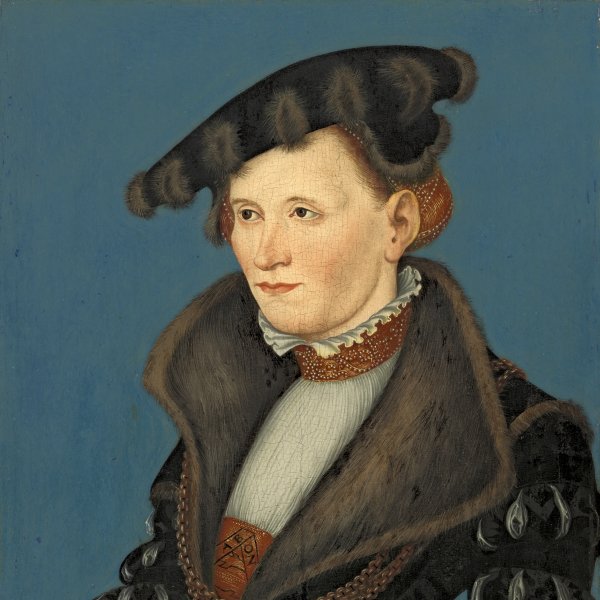Lucas Cranach the Younger
Younger son of Lucas Cranach the Elder, this artist was born in Wittenberg in 1515. He trained and worked in the family studio from a young age, where his responsibilities increased from 1530, particularly following the sudden death of his elder brother Hans in 1537. In 1550, the year that his father left Wittenberg to follow his patron into exile, Lucas Cranach the Younger became the official head of the family enterprise. In 1541 he married Barbara Brück, daughter of the Elector’s minister Gregor Brück. After her death in 1550, the artist married Magdalene Schurff, granddaughter of Melanchthon. Lucas Cranach the Younger also followed his father’s footsteps in the world of politics and from 1549 occupied the position of city counsellor of Nuremberg. From 1555 he was Chamberlain and from 1565 Burgomaster of that city. His output prior to 1550 remains in part undefined as the influence of his father on his style was so pronounced at that period that it is difficult to distinguish their paintings. Works from that period have been identified on the basis of similarities to others painted after 1550 when Lucas Cranach the Younger began to work as an independent master. Among his earliest known works are two large panels, signed and dated 1551, on the subject of Hercules (Gemäldegalerie, Dresden), painted for the new Elector Maurice of Saxony. Among his most important oil paintings are those painted in 1555 for the exiled John Frederick, former Elector of Saxony, for whom Lucas Cranach the Younger painted a large triptych on the theme of Original Sin and Redemption for the church of Saints Peter and Paul in Weimar. Lucas Cranach the Younger continued to depict themes that his father had made popular including portraits of the reformers, religious allegories and classical subjects.





